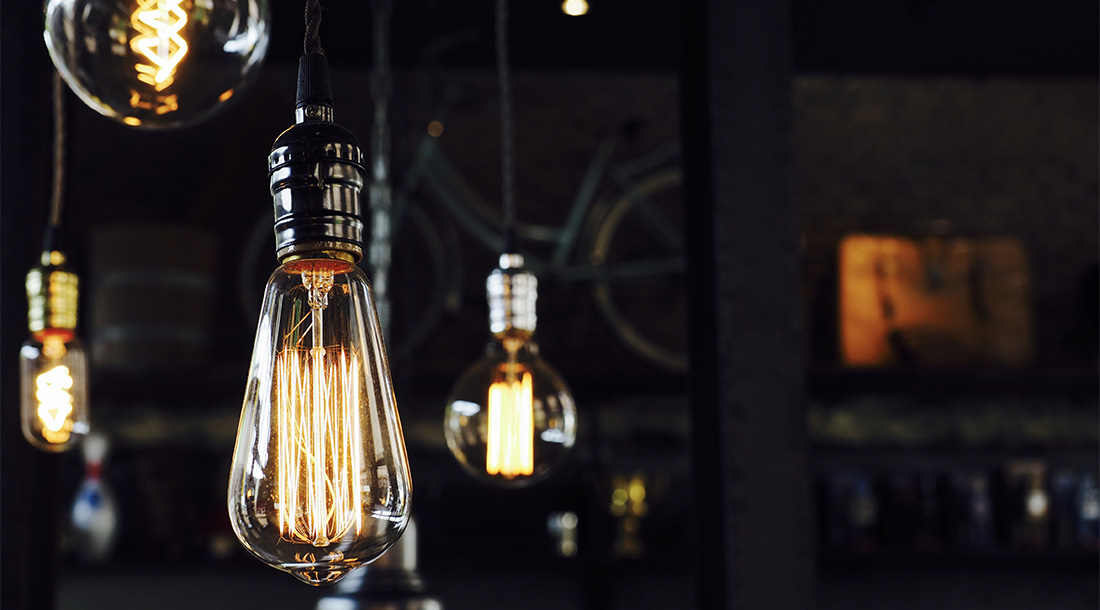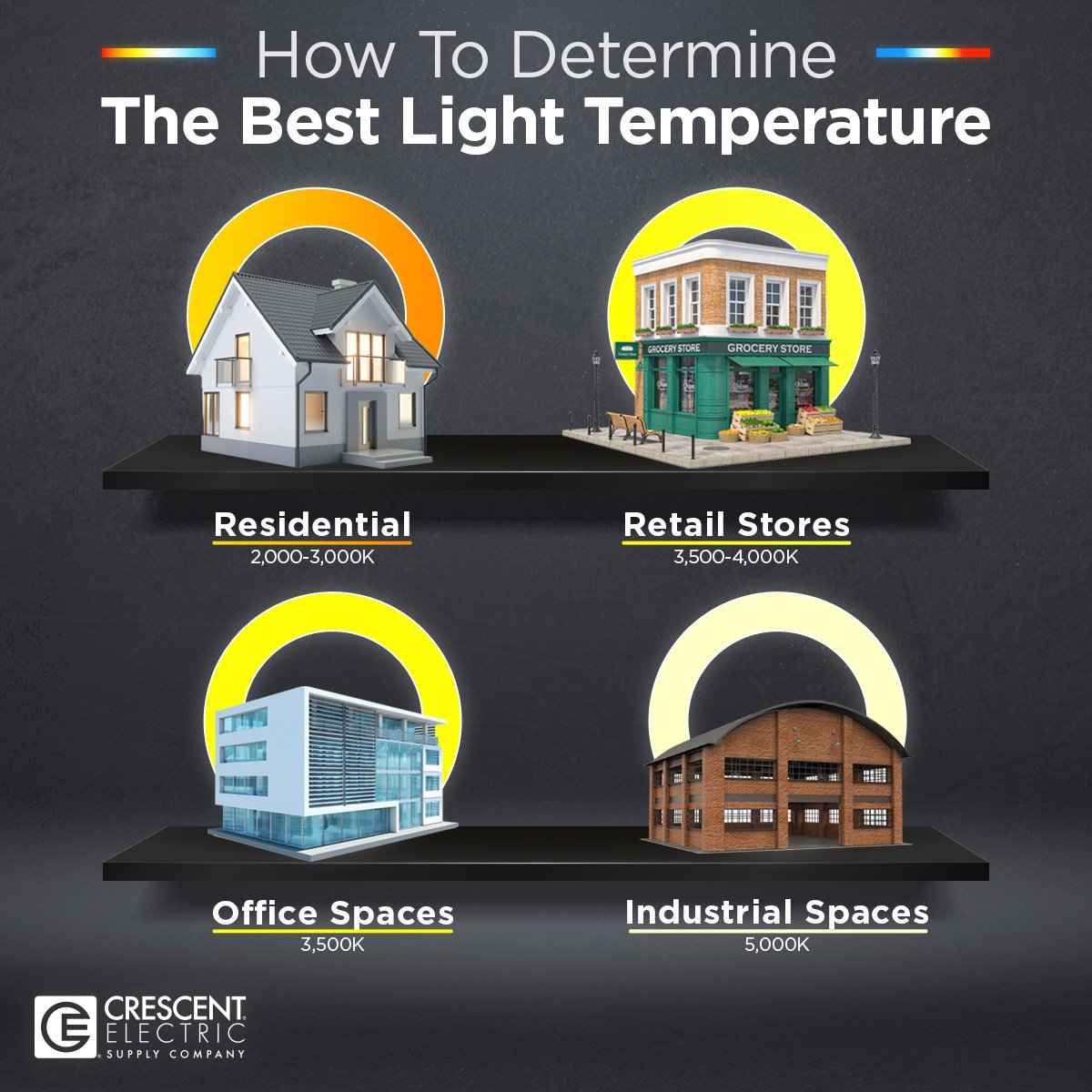
How to Determine the Best Light Color Temperature
Have you noticed that walking into someone’s home feels different than walking into a hardware store—and that each of these feels different than walking into an industrial facility? While there are several factors that play into this, chances are lighting is near the top of the list.
All lighting is not created equal—in fact, light color temperature can have a significant impact on the look and feel of a room or building. Let’s take a look at how light color temperature is measured and how to choose the right one for your situation.
How Light Color Temperature is Measured
Light color temperature refers to the color emitted from light, commonly expressed as either warm light or cool light. Specifically, this is determined by light’s Correlated Color Temperature (CCT) which describes the appearance of white light. CCT is measured in degrees of Kelvin (K) with values ranging from 1,000K to 10,000K.
The CCT value, expressed on the Kelvin light scale, can be used to find the perfect light color temperature to fit your needs and situation. As a rule of thumb, the higher the Kelvin value, the cooler the color temperature.
For reference, let’s look at some ranges of the Kelvin scale.
1000K - 2000K
The lowest range of the Kelvin light scale is often likened to candlelight. This light color temperature will be very warm—typically, the light will be dim and have an orange glow.
2000K - 3000K
The next range produces light color temperature that has a bit more yellow than orange, producing a warm white that is cozy and inviting.
3000K - 4500K
This range marks the transition from warm light to cool light with the introduction of brighter whites.
4500K - 6500K
This range includes the color of broad daylight (typically 5000-5500K). The top end introduces more blue into the light, making for a cool and crisp color temperature.
6500K and above
The further above 6500K you go, the bluer you get. Color temperature above 6500K is generally not used for lighting fixtures.
How to Determine the Best Light Color Temperature
Different spaces—from individual rooms to entire facilities—can benefit from different light color temperatures. Not only can this influence the feel of each space, but it can also impact important elements like safety.
Warm light is often best suited for residential lighting and certain retail locations to provide a comfortable, inviting environment. Office spaces can benefit from a balanced color temperature to help employees fend off fatigue and stay energized throughout the day. On the other hand, warehouses or industrial facilities must have brighter, cooler light to meet workplace requirements and ensure that employees are safe and productive.
The following infographic illustrates which light color temperatures are best for these common situations:

Why Light Color Temperature is Important
Choosing the right light color temperature can impact the look and feel of a space—but there is more to the story. Using the proper light color temperature can have tangible benefits for those using the space. This is due to the concept of circadian lighting.
Circadian lighting is modeled after the human circadian rhythm, or our internal clock. Research has shown that light can directly impact our circadian rhythm, and therefore, choosing the proper lighting should not be taken lightly—especially given the fact that most people spend the majority of their time indoors.
The concept of circadian lighting is relatively simple: the color temperature of artificial light should mimic that of the sun’s natural light throughout the day. For example, artificial light should be warmer in the morning and evening and cooler during midday. Studies have shown that this can help reduce the effects of artificial light and promote well-being.
Many industries have leveraged this idea with the goal of boosting productivity in the workplace. Research suggests that using brighter, cooler color temperatures that mimic the daylight sun can help keep employees energized, efficient, and productive.
Get the Right Lighting from Crescent Electric
Whether it’s time to replace aging light fixtures or optimize the lighting in your space, Crescent Electric has what you need to get the benefits of the right light color temperature. Shop our selection of residential, commercial, and industrial lamps and lightbulbs, fixtures, and accessories from top manufacturers like GE Current, RAB Lighting, and more!